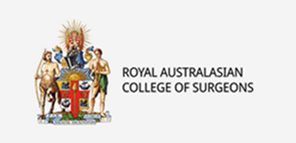- 0401 792 644

- 0401 792 644

Gallbladder removal is one of the most commonly performed surgical procedures in Australia. Gallstones affect approximately 1 in 10 adults, making gallbladder disease one of the most prevalent conditions of the digestive system. Today, most gallbladder surgeries are performed using a minimally invasive technique known as laparoscopic cholecystectomy.
The gallbladder is a small, pear-shaped organ located beneath the liver. Its primary role is to store and concentrate bile, a digestive fluid produced by the liver. After eating, particularly fatty meals, the gallbladder releases bile into the small intestine via the bile ducts to aid in digestion.
Removal of the gallbladder does not usually impair digestion in most people, as the bile ducts can compensate by storing and delivering bile directly to the intestine.
Most gallbladder problems are caused by gallstones—small, hard deposits made of cholesterol and bile salts. These stones can form in the gallbladder or bile ducts. While the exact cause of gallstone formation is unknown, some predisposing factors that have been found to be associated with gallstones are female gender, obesity, rapid weight loss, advancing age, multiple pregnancy and a family history of gallstones.
Gallstones can obstruct bile flow, leading to:
Pancreatitis can range from mild discomfort to a severe, life-threatening illness. Once pancreatitis resolves, cholecystectomy is typically performed during the same hospital admission or soon after, to prevent recurrence and further complications.
Gallbladder cancer is a rare condition that may be associated with chronic gallstone disease, but it is not a common progression. Cholecystectomy is not routinely recommended solely to prevent gallbladder cancer.
Ultrasound is the primary method for detecting gallstones. In more complex cases, additional imaging such as MRCP (Magnetic Resonance Cholangiopancreatography) may be required.
Gallstones do not dissolve on their own. While medications or dietary adjustments may provide temporary relief, symptoms usually recur. Surgical removal of the gallbladder is the safest and most effective treatment. Attempts to remove only the stones or dissolve them are generally ineffective and associated with higher risks.
The gallbladder becomes functionally redundant when diseased, and the body can function normally without it.
Surgical removal of the gallbladder is indicated for:
Asymptomatic gallstones discovered incidentally typically do not require surgery unless there are concerning features.
Pre-operative steps may include:
Instructions:
Medication alerts: Notify your team if you take:
It is also essential to inform Dr Noushi and his anaesthetist if you require antibiotics before dental procedures. While prophylactic antibiotics are not routinely required for gallbladder surgery, they may be necessary for patients with specific conditions, such as prosthetic heart valves or a history of endocarditis.
Laparoscopic cholecystectomy is performed under general anaesthesia using small incisions (“keyhole” surgery). A laparoscope (tiny camera) and instruments are inserted through 4 small openings. The gallbladder is detached, and any bile duct abnormalities are assessed using an intraoperative cholangiogram (dye-based X-ray).
The cystic duct and artery are sealed with permanent titanium clips. These are permanent, inert, and generally well-tolerated. In rare instances, clip migration has been reported but is exceedingly uncommon. The gallbladder is then removed, and the incisions are closed with dissolvable sutures and surgical tape.
Advantages include:
In about 1% of patients, laparoscopic surgery may need to be converted to open surgery due to:
This is not a complication, but a safe and necessary step to reduce the risk of injury. Open surgery involves a larger incision and a slightly longer recovery period in hospital.
Activities:
In general, recovery should be progressive once the patient is at home. Strenuous activity and core exercises should be avoided for 3–4 weeks or until cleared by your surgeon.
After surgery, some individuals may experience mild digestive changes such as bloating, loose stools, or food sensitivity. These symptoms are typically temporary and resolve within a few weeks.
Gallbladder removal is a major abdominal operation, and it is normal to experience some postoperative pain. Pain is usually managed effectively with oral pain relief medications such as paracetamol or anti-inflammatories.
Schedule a follow-up appointment with Dr Noushi within 2 weeks of your surgery.
Seek medical attention if you experience:
While complications are rare, all surgeries carry some risk. These may include:
General surgical risks:
Specific to laparoscopic cholecystectomy:



